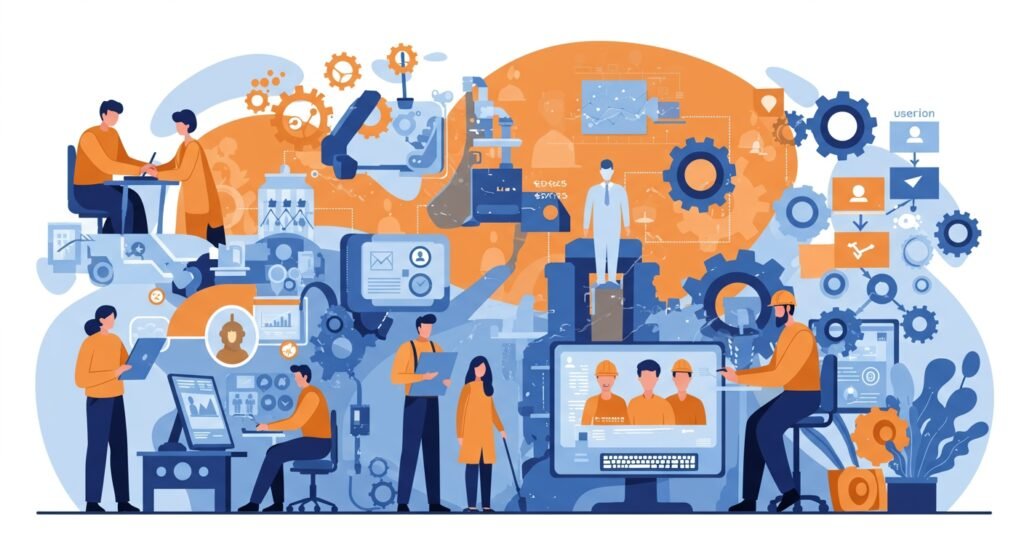Why Human Factors Matter in Industrial Engineering Education
In the rapidly evolving landscape of modern industry, the integration of human elements into system design is no longer a luxury but a necessity. This is precisely where the profound importance of human factors in IE (Industrial Engineering) education comes to the forefront. Industrial engineering, traditionally focused on optimizing processes and systems, gains an invaluable dimension when it deeply considers the capabilities, limitations, and behaviors of the human operators within those systems. Ignoring human factors can lead to inefficiencies, errors, and, most critically, dangerous work environments. Understanding how humans interact with machines, software, and their environment is paramount for creating truly effective, safe, and sustainable industrial solutions. This article delves into why embedding human factors principles deeply within industrial engineering curricula is more vital now than ever.
Table of Contents
- Introduction
- What Are Human Factors in Industrial Engineering?
- The Critical Role of Human Factors in IE Education
- Integrating Human Factors: A Practical Approach
- Case Studies: Impact in Action
- The Future of Human Factors in IE
- Conclusion
What Are Human Factors in Industrial Engineering?
Human factors, also known as ergonomics, is a multidisciplinary field that focuses on the interactions between humans and other elements of a system. It applies theory, principles, data, and methods to design in order to optimize human well-being and overall system performance. In the context of industrial engineering, this means designing tools, workstations, processes, and entire systems that are compatible with human physical and cognitive abilities. It encompasses understanding how fatigue, stress, attention, decision-making, and sensory perception impact performance and safety in industrial settings. This holistic view ensures that technology and processes serve humanity, rather than the other way around.
The Critical Role of Human Factors in IE Education
Incorporating human factors in IE education prepares future engineers to tackle complex, real-world challenges with a human-centric perspective. Here’s why it’s indispensable:
Enhancing Safety and Reducing Accidents
One of the most immediate and impactful benefits of human factors education is the ability to design for safety. By understanding common human errors, limitations in perception, and the effects of environmental stressors, engineers can create systems that minimize the potential for accidents. This includes designing clearer warning systems, intuitive controls, and robust safety protocols. Graduates equipped with this knowledge can identify potential hazards before they lead to catastrophic failures, protecting workers and the public. For more insights on workplace safety, you can visit OSHA’s official website.
Optimizing Efficiency and Productivity
Efficiency isn’t just about faster machines or streamlined workflows; it’s also about optimizing human performance. When systems are designed with human capabilities in mind, operators can perform tasks more quickly, accurately, and with less physical and mental strain. This leads to reduced downtime, fewer errors, and ultimately, higher productivity. A well-designed system minimizes wasted motion, cognitive overload, and provides clear feedback, enabling humans to operate at their best.
Improving User Experience and System Usability
Modern industrial systems, from manufacturing lines to complex software interfaces, require human interaction. Engineers trained in human factors understand the principles of user experience (UX) and usability, ensuring that systems are intuitive, easy to learn, and satisfying to operate. This reduces training time, decreases frustration, and increases user acceptance of new technologies, which is crucial for successful implementation and long-term adoption.
Fostering Ethical and Sustainable Design
An education in human factors instills a deeper sense of ethical responsibility in engineers. It emphasizes designing for human well-being, considering the long-term physical and psychological impact of work environments on employees. Furthermore, by optimizing human-system interaction, it contributes to more sustainable practices, reducing waste generated by errors, rework, and inefficient processes. This prepares engineers to contribute to a more just and sustainable industrial future.
Integrating Human Factors: A Practical Approach
Effective integration of human factors into IE education involves a blend of theoretical knowledge and practical application. This includes coursework in cognitive psychology, biomechanics, statistics, and system design, coupled with hands-on labs, simulations, and real-world projects. Students should learn to conduct task analyses, apply ergonomic principles, and use human performance modeling techniques. This practical exposure ensures graduates can immediately apply their knowledge in diverse industrial settings, from manufacturing and healthcare to transportation and defense. For a deeper dive into optimizing industrial processes, check out our article on Industrial Process Optimization.
Case Studies: Impact in Action
The real-world impact of human factors is evident in numerous industries. From preventing catastrophic aircraft incidents through better cockpit design to improving patient safety in hospitals via intuitive medical equipment, human factors engineering consistently demonstrates its value. Consider the contrast:
| Aspect | Traditional IE (Limited Human Factors) | IE with Integrated Human Factors |
|---|---|---|
| Design Focus | Process efficiency, machine output | Human-system compatibility, well-being |
| Safety Outcomes | Reactive (post-incident analysis) | Proactive (error prevention, inherent safety) |
| Productivity | Often optimized without human strain | Optimized with reduced human effort/fatigue |
| System Usability | Can be complex, requiring extensive training | Intuitive, user-friendly, minimal training |
| Error Rates | Higher due to human-system mismatch | Significantly lower through design |
The Future of Human Factors in IE
As automation and artificial intelligence become more prevalent, the role of human factors will only grow. Engineers will need to design complex human-AI collaboration systems, ensuring seamless and safe interaction. Education must adapt to prepare students for these challenges, focusing on adaptive interfaces, trust calibration in autonomous systems, and ethical considerations of intelligent automation. The ongoing evolution of industrial technology makes a strong foundation in human factors an irreplaceable asset for any industrial engineer.
Conclusion
The demand for industrial engineers who can skillfully integrate human factors into their designs is accelerating. By emphasizing human factors in IE education, institutions are not just teaching a specialized subject; they are cultivating a mindset—one that prioritizes safety, efficiency, and human well-being. Graduates with this comprehensive understanding will be better equipped to innovate, solve complex problems, and lead industries towards a future where technology and humanity seamlessly collaborate for collective success. Investing in this crucial area of education is an investment in a safer, more productive, and more humane industrial world.


